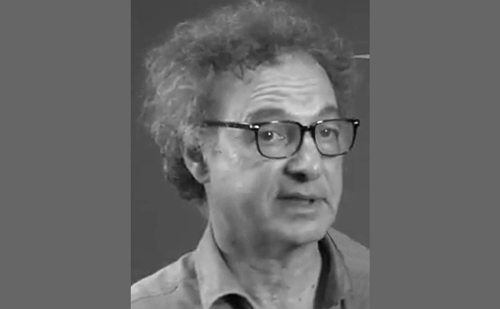Report from a Satellite Symposium held at the 28th Annual Congress of the European Society for Intensive Care Medicine, Berlin, Germany, 5 October 2015
Temperature management to avoid fever is standard practice in patients with traumatic brain injury (TBI), subarachnoid haemorrhage and stroke. The aim is to reduce post-injury oedema and control elevated intracranial pressure (ICP). However, despite standard care, temperatures exceeding 37.5°C are common in patients with brain injuries and temperature control is often problematic in patients with haemorrhagic or traumatic injuries in which the hypothalamus and temperature control areas are disturbed by the cerebral insult. The effect of cooling on brain swelling has been widely studied in patients in the neuro-intensive care unit and in a systematic review of patients with severe TBI, all studies showed that early prophylactic hypothermia from 32°C to 34°C consistently reduced ICP compared with normothermia (37°C). However, high-quality clinical evidence to support the use of normothermia versus targeted temperature management ≤35°C in adults is lacking and a randomised controlled trial is warranted. At present, optimal temperature thresholds and duration of temperature management should be tailored to the clinical scenario and the severity of the injury, particularly regarding ICP.
Traumatic brain injury (TBI) is a leading cause of death and serious disability worldwide.1 Hyperthermia is thought to worsen neurological injury in patients with traumatic or ischaemic brain injury and treatment of fever in this setting is a critical clinical issue that needs improved management.2 After the primary injury such as stroke, several pathophysiological processes occur, all of which are temperature-dependent, and aggravated by fever, a secondary injury can develop over the course of hours to days, that may involve oedema, swelling, high intracranial pressure (ICP), ischaemia and reduced perfusion.1 Fever was common in critically ill neurosurgical patients, especially those with a prolonged length of stay in the intensive care unit (ICU) in a retrospective chart review of febrile episodes over a six-month period (Figure 1).2 Out of the 428 patients studied there were 946 febrile episodes. Fever occurred in 47% of patients, with an average of 4.7 febrile episodes. Fevers occurred in 15% of the patients who stayed in the ICU less than 24 hours, but in 93% of those who remained in the ICU for longer than 14 days. Even with antipyretic therapy use for 86% of the febrile episodes, 57% lasted longer than four hours and 5% lasted longer than 12 hours. In 18 studies involving hypothermia for control of ICP in patients with TBI, therapeutic hypothermia (TH) (32–34°C) was effective in controlling ICP. In 11 prospective randomised clinical trials of severe TBI, moderate TH was at least as effective as most other treatments for intracranial hypertension (ICH).3 These alternative treatments included hyperventilation, mannitol and barbiturates. If used for ≤2 days, there was no evidence that moderate TH caused significant adverse events. Recommendations from the American Heart Association/American Stroke Association for the management of cerebral and cerebellar infarction with swelling state that “temperature management is part of basic support and a normal temperature is reasonable” and “the effectiveness of the use of TH before brain swelling is not known”.4 Elevated ICP is a predictor of mortality in TBI and treatment of raised ICP has been shown to improve outcome and reduce mortality.1 In a study from Japan of 31 patients with severe head injury, ICP was decreased significantly at brain temperatures below 37°C, decreasing more sharply at temperatures 35–36°C.5 Sufficient cerebral perfusion pressure was maintained without cardiac dysfunction or oxygen debt. No differences in ICP reduction were observed at temperatures below 35°C. Therefore, 35–35.5°C seemed to be the optimal temperature at which to treat patients with severe TBI in this study.
Duration of cooling
As the secondary injury develops over the course of days, it is logical that tailored temperature management (TTM) should be applied in a similar timeframe. In a comparison of long-term


hypothermia (surface cooling for five days, n=108) versus short-term mild hypothermia (surface cooling for two days, n= 07) in patients with severe TBI, the longer-term cooling appeared more efficacious in terms of ICH control.6 A higher proportion of patients who received the longer-term cooling had favourable outcomes (43.5%) compared with the shorter-term cooling. The ICP rebounded significantly after rewarming in the short-term cooling group but not in the long-term cooling group. The rates of pneumonia and arrhythmia were comparable between the two groups. In a prospective study of prophylactic long-term normothermia (n=102), long-term, catheter-based normothermia significantly reduced fever burden in neurointensive care unit patients with severe cerebrovascular disease.7 It was not associated with increased major adverse events.
Optimal temperature target
In a predictive model of a dynamical system showing the physiological complexity of acute TBI in patients treated with a brain oxygen protocol, the boundary conditions or intolerance range for temperature was 34– 36°C.8 The temperature target of 35°C has the same effect on ICP as 33°C (hypothermia), though oxygen delivery is higher at 35°C and there is a reduced incidence of brain hypoperfusion/hypoxia. Physiological


changes induced by TTM are shown in Figure 2; although these changes provide opportunities for resuscitation, they may be detrimental to the patient’s outcome if not properly anticipated and managed.
Tailored temperature management methods
Cooling methods used in clinical practice are shown in Figure 3. Cold fluids have been associated with faster cooling but not a better outcome in cardiac arrest patients.9 Benefits include: maximal protective effects on the brain and other issues, myocardial infarct size reduction (if myocardial infarct is the cause of arrest), and early volume replacement, while potential risks are a decrease in cerebral and coronary perfusion pressure, pulmonary oedema and detrimental respiratory consequences and overcooling. Unintentional overcooling is common when ice packs and conventional cooling blankets are used in TH post-cardiac arrest.10 The cardio-circulatory side effects of overcooling include reduced heart rate, the consequences of which include arrhythmia, bradycardia, atrioventricular blocks and reduced blood pressure, increased vasopressors and ischaemia. The benefits of an advanced computerised surface on therapeutic endpoints compared with other cooling methods are shown in Table 2.
Post-cooling phase – withdrawal of tailored temperature management
Rebound hyperthermia in cardiac arrest patients who have undergone therapeutic hypothermia was a marker for increased mortality and worsened neurological morbidity.11 After moderate hypothermia,

rewarming exceeding the 37°C threshold was associated with a significant increase in the average cerebrovascular pressure reactivity index, in a retrospective analysis of 24 TBI patients with refractory ICH.12 This finding was indicative of temperature-dependent hyperaemic derangement of cerebrovascular reactivity. A slow rewarming rate meanwhile reduced the likelihood of a decrease in jugular venous oxygen haemoglobin saturation in patients scheduled for elective coronary artery bypass graft surgery.13 Together, these results support a strategy of controlled rewarming for TTM withdrawal.
Summary
• For patients with TBI, TTM is the most powerful mechanism of neuroprotection currently available.14
• Hypothermia is proven to have clinically beneficial effects in preventing secondary brain injury in patients who have experienced cardiac arrest and in neonates with hypoxic ischaemic injuries.14
• Cooling is an effective mechanism to reduce ICP in patients who do not respond to standard medications.14












